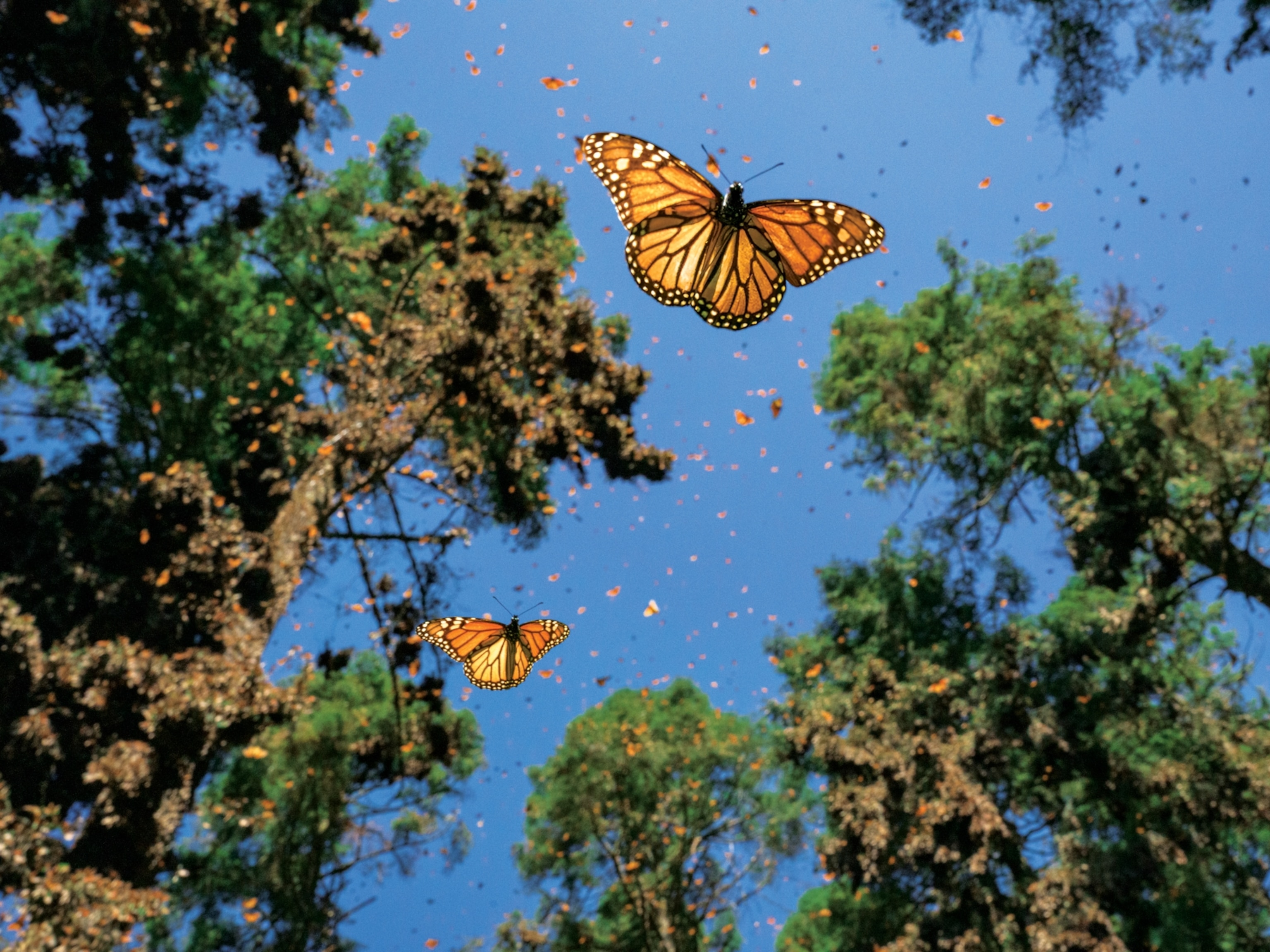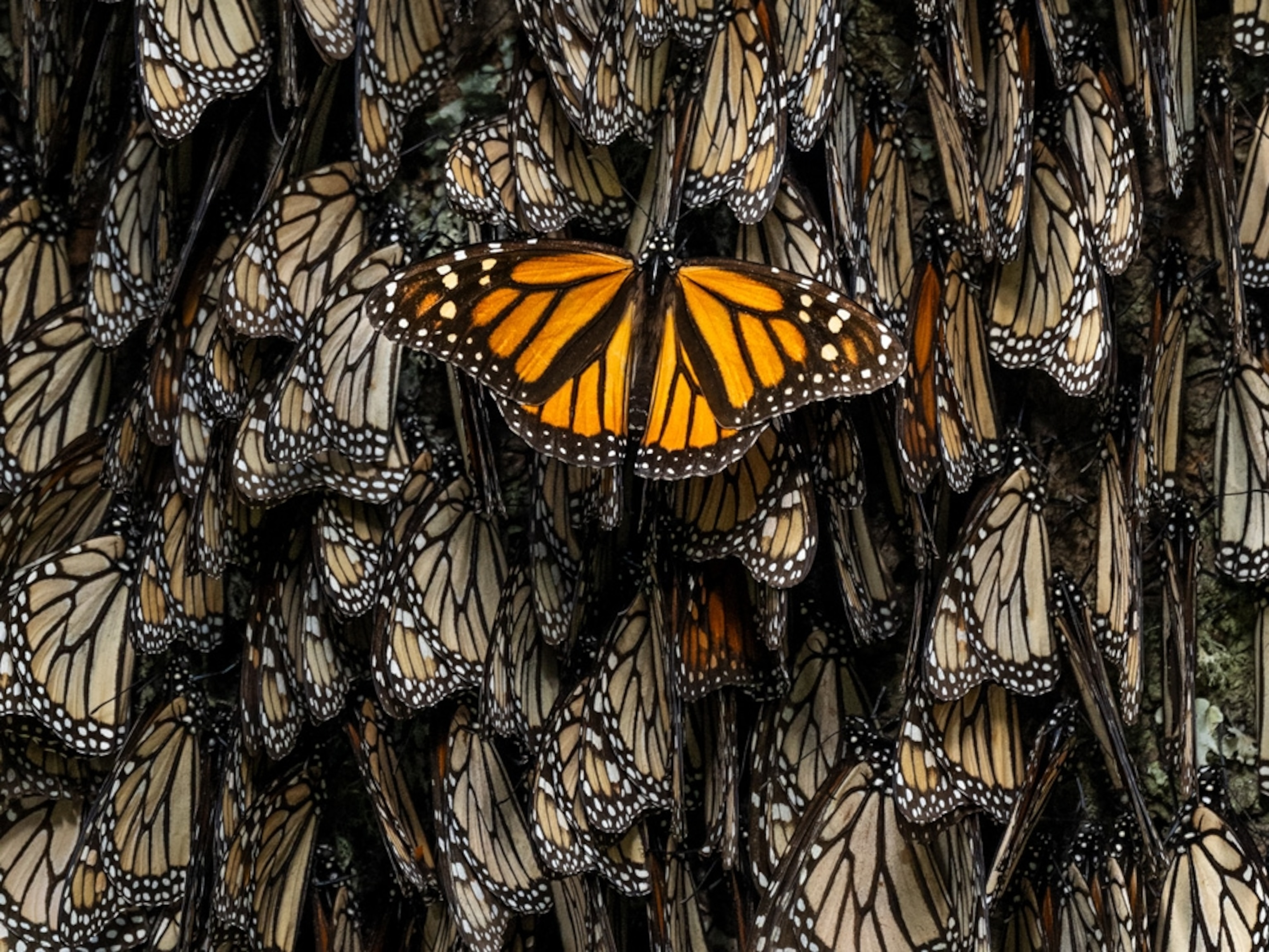
Monarch butterflies denied endangered species listing despite shocking decline
Fewer than 2,000 western monarchs have been counted in California this autumn, but in a long-awaited decision, the government recommends not designating them a threatened species.
Migratory western monarch butterflies have reached a record low this year, putting them at the brink of extinction, according to the latest survey of the insects. The annual autumn count, though not finalized, stands at fewer than 2,000—a significant decline from roughly 30,000 documented in last year’s count and millions on the wing in the 1980s. These numbers, collected by the Xerces Society for Invertebrate Conservation, come as the U.S. Fish and Wildlife Service announced today that it would not be recommending protection for the species under the Endangered Species Act.
While the U.S. Fish and Wildlife Service found that the monarch meets listing criteria under the Endangered Species Act, it opted not to list the butterfly, citing the need to focus resources on "higher-priority listing actions," says Lori Nordstrom, assistant regional director for ecological services of the agency's Great Lakes regional office, which reviewed the monarch designation. The Great Lakes office considers nine regional species to be higher priorities for listing, including the little brown bat, the Illinois chorus frog, and the golden-winged warbler, Nordstrom says.
The monarch is a "candidate" for listing, Nordstrom says, adding that the Fish and Wildlife Service will review its status each year. If by 2024 the monarch still warrants being listed, the agency will propose doing so, she says.
The Xerces Society said in a press release that while it is glad the agency recognized that protection is warranted, the monarch "cannot wait."
Protection under the Endangered Species Act would require the government to develop and fund a comprehensive, nationwide recovery plan. It would also provide an extra layer of scrutiny for any federal activities—such as border wall construction—that might jeopardize monarch butterflies’ habitat or survival.
Western monarchs, which spend their winters on the California coast, have declined 99 percent in the past 40 years.
“We may be witnessing the collapse of the monarch population in the West,” Sarina Jepsen, the director of Xerces’ endangered species program, told the Associated Press. Last month, monarchs also lost out on protections under the California Endangered Species Act, after a court ruled that the law doesn’t apply to insects.
Eastern monarchs, famous for their 3,000-mile migration to central Mexico, are also in trouble; their numbers have declined by roughly 80 percent in the past 40 years.
Environmental degradation and increased use of insecticides on milkweed plants—the sole host for monarch eggs and only food source for monarch caterpillars—are cited as drivers of the decline, which is why milkweed-planting campaigns have been promoted as a way to help save monarchs. However, those factors haven’t been proven beyond a doubt to be the cause of the species’ decline, says Arthur Shapiro, an evolution and ecology professor at University of California, Davis, who has monitored butterfly populations in north-central California for nearly 50 years.
The bottom line is that “we don’t know, and we don’t understand it,” he says. During nearly 200 days in the field this year, Shapiro has seen only 10 adult monarchs, he says—and he hasn’t seen a single monarch caterpillar in the wild for three years. (Read more about why monarchs are disappearing.)
Shapiro offers a theory for why western monarchs’ speed of decline has increased. Climate change may be triggering increased breeding during the winter, a shift in reproduction that seems to make them more susceptible to a deadly or debilitating parasite that infects newly hatched larvae, called Ophryocystis elektroscirrha (OE).
Furthermore, California’s extreme wildfires burned critical butterfly habitat. The fires also emitted record amounts of carbon dioxide, which has been shown to trigger milkweed to increase production of toxic steroids called cardenolides. Monarchs have evolved to withstand a certain level of that toxin, storing it away in their bodies as a bitter-tasting deterrent to potential predators, including parasites. But higher levels of this toxin in the plant have been shown to lower monarchs’ ability to tolerate OE—and they can make the milkweed border on toxic to the butterflies themselves.
The increased planting of nonnative tropical milkweed by gardeners who want to help may also contribute to the proliferation of the deadly parasite. Unlike native milkweeds, tropical ones don’t die off seasonally, allowing OE to accumulate on the leaves.
Putting the monarch on the endangered species list was controversial from the beginning because it potentially would have meant farmers would face more regulations on pesticide and land use.





